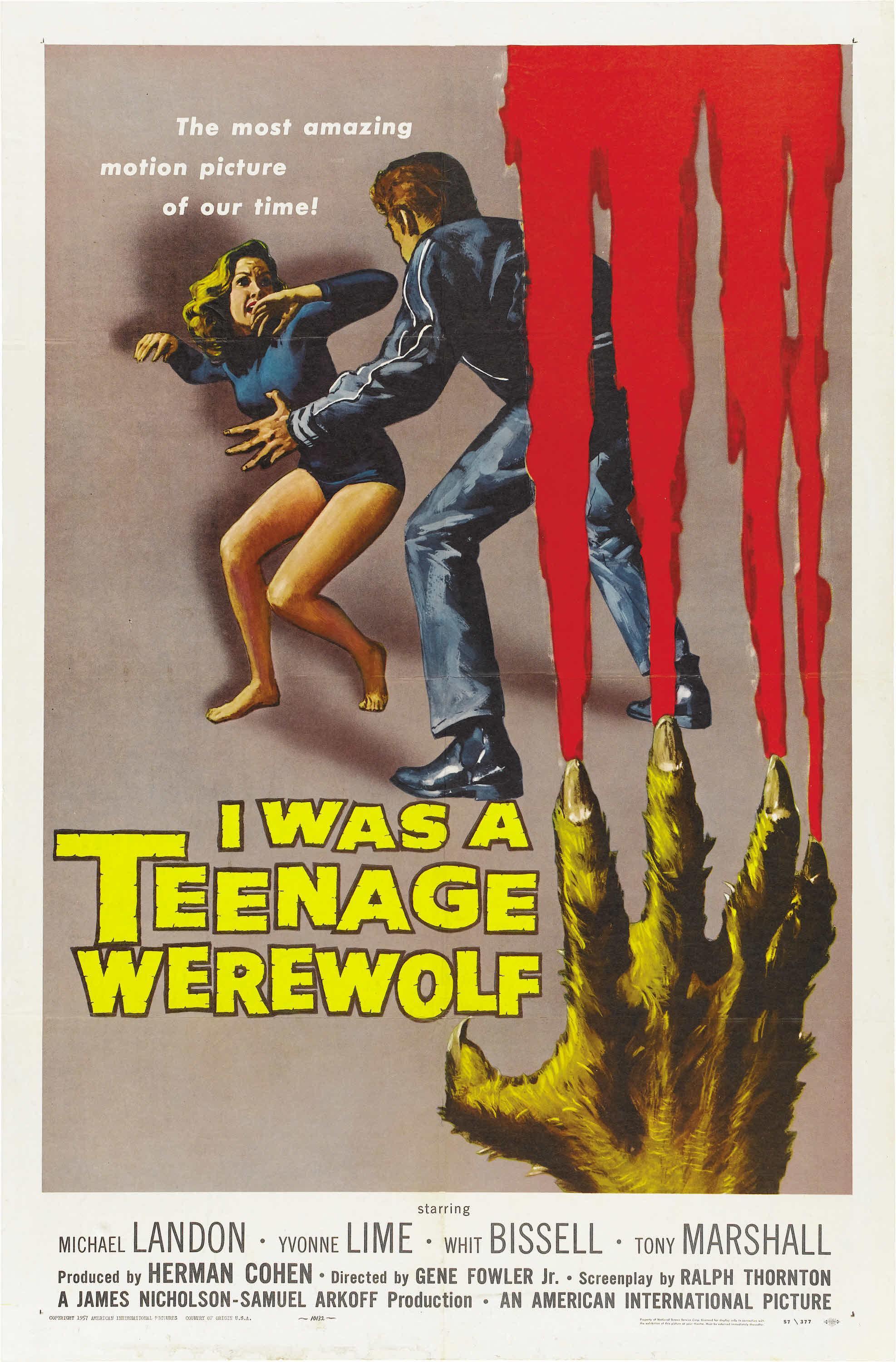Despite its apt but risible title, “I Was a Teenage Werewolf,” surprises in both the sincerity of its playing, as well as by its accomplished technical credentials. Campy confessional title nothwithstanding, there is nothing about the screenplay that is deliberately parodic.
Effectively photographed by distinguished cinematographer Joseph La Shelle, and bolstered by an excellent musical score, the film thus provides a solid showcase for both its scenario and the performances of its young principals.
More importantly, (and this is what gives the picture a leg up on others of its ilk) the film is moodily under-lit, giving much of it a film noir ambiance. This is most evident in the hypnosis sequences, (the best in the film) which are staged and photographed in a way very reminiscent of Lewton’s “Cat People.”
Anyone doubting the value of the change purse aesthetics at work here need only consult the negligible results attained in such schlock as “Blood of Dracula” or the pre-Poe Corman films, which make “Teenage Werewolf” look like David Lean by comparison. Here the sincere effort of the technical crew shows: an unsettled, fatalistic brooding mood is generated, taking equal measure from the sense of doom hanging over the protagonist and expressed in shadows everywhere, even in mid-day living rooms and psychiatrist’s offices.
Mr. Landon brings a sensitive intensity to the role that is wholly convincing, and he is ably abetted by all in support. Mr. Sokoloff is fine in his masculine reprise of the Maria Ouspenkaya role from Lon Chaney’s “The Wolfman,” and a pre Zorro Guy Williams shows up effectively as a policeman.
While admittedly done on a modest budget, this limitation is actually an asset, inasmuch as it prevents the art direction from going over the top in its very effective depiction of proletariat domestic interiors, (Miss Lime’s character even has Archie and Edith Bunker type parents.) Thus, the homes, teen club, principal’s office etc. are “right on the money.”
Even so, sharp eyed viewers will note that a leather sofa does double duty in both the police detective’s and Miss Fergusan’s office. Similarly, Dr. Brandon’s and Miss Fergusan’s respective office’s are the same set, re-arranged, and re-dressed.
For his part, Mr. Landon, flush with his TV western success, and (equipped with accompanying footage), lampooned his role in the film in a 1969 guest appearance on the Jerry Lewis TV show.

